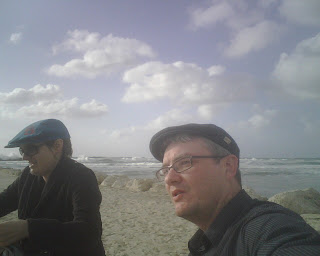Understanding the Jewish Year through Rain and Dew
There are moments in our liturgy that can pass so swiftly and easily that we barely give them a glance. One such moment passed recently during Pessach shacharit the morning after our Seder. During the Musaf we add a special prayer said once a year that is echoed in a similar prayer also said once a year after Sukkot.
“With the knowledge of the Eternal I will speak of secrets / That for this people, by this prayer / There may be joy in dew / May the valley and its flora / be renewed through dew / Flourishing anew under the shade of the Eternal / Sign of regeneration / Shield of future generations: dew.”
After we speak this poem and the accompanying blessing, we change our daily prayers. A line in the Amida changes from “mashiv haruach u’morid hagashem,” “You make the wind blow and the rain fall,” to “morid hatal,” “You cause the dew to fall.” This will once again switch back during the morning service of Shemini Atzeret, the “Eighth Day of Gathering” of Sukkot.
At first glance this seems to be either trivial or superstitious. Certainly the prayers reflect a clear solidarity with the agricultural cycle of Eretz Israel. Yet this does beg the question as to their relevance today.
Rabbi Tovia ben Chorin said to his students during their first year of rabbinical school, “To live a Jewish life means to live in Jewish time.” Certainly one can understand that being aware of Israel’s agricultural changes can add appreciation to our Jewish interconnectivity. Yet there is a much more subtle and profound understanding of these prayers.
The followers of the Baal Shem Tov asked the question, “What do we do during the rain and what do we do when there is dew on the earth?” Said differently, what Jewish events happen while we pray about rain and which events while we pray about dew?
During the time of dew, the bulk of the intense religious work of being a Jew comes into play. We talk of dew during Pessach, the counting of the Omer, Shavuot, the month of Elul, Rosh Hashanah, Yom Kippur and seven days of Sukkot. After we switch over to rain we celebrate Simchat Torah, Channukah, Tu B’Shevat and Purim. Even at first glance there is something radical occurring; the secret is in the nature of rain vs. dew.
In rain we receive. We open ourselves to the energy of the universe as we are flooded by something over which we have no control. In dew we give. We toil as the earth around us has been prepared for our labor. Stated differently, rain signifies God’s labor and dew signifies our labor.
Starting in Pessach we have work to do; real work suggested by our tradition that has the potential of working radical change in our lives. At Pessach we ask, “To what are in enslaved?” and begin the process of escaping our slaveries as we count the Omer, our daily count down of distancing ourselves from damaging habits, until we cleanse ourselves and can stand at the foot of Sinai and receive Torah – receive the new life and wisdom that we can absorb after finding freedom. This renewed revelation leads us to Elul, the month before the High Holy Days where we perform the hard work of personal reflection, and then make teshuva during the High Holy Days with those around us that we have wronged, renewing our relationships and strengthening our communities. After this work we must rest and be recharged in rain, celebrating Torah, overcoming adversity, spring overcoming winter, and celebrating survival in laughter and drink. The dew comes and we begin once again the work. But if we have lived in this special cycle of Jewish time to the fullest, we begin different, deeper work that through this cycle brings us every year closer to our tradition, our true selves, and those around us.

Comments